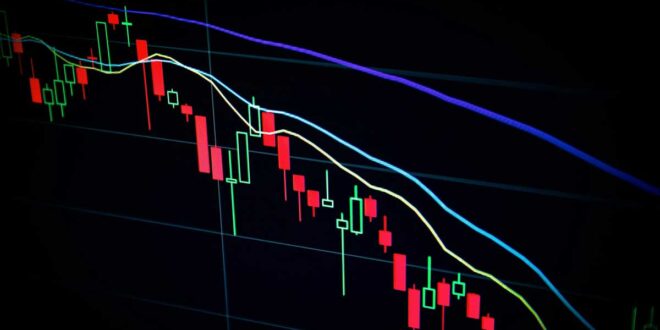Wei Hongxu
Recently, there have been many different views on the changes brought about by inflation in the U.S. and the global economy. Regardless of those who are of the opinion that the inflation will persist, or those who believe that it is only temporary, most maintain high inflation and low growth expectations this year. Not long ago, international institutions such as the OECD and the World Bank have lowered their forecasts for global economic growth this year and raised their inflation expectations. Inflation will be the main factor affecting economic growth and monetary policy for quite some time to come. The current differences are mainly concentrated in the next year or the year after, in the case of global central banks tightening monetary policy, whether the inflation will gradually drop, or will it fall rapidly.
The Federal Reserve has been criticized for its timing of tightening monetary policy. The outside world believes that the Fed has missed the best period for policy change. Therefore, many market participants are worried that global central banks, including the Fed, may adopt an “expedited” approach in their tightening policies, thereby curbing economic demand and even leading to recession. At the same time, at least 60 central banks around the world have taken tightening actions during the year, ahead of, or following the Fed. Currently, on the issue of monetary policy options, essentially there is not much disagreement on adopting a tightening policy in response to inflation. The focus of the contradiction is whether there is an “overshoot” in the tightening of the policy, which will cause harm to the economy.
Noteworthily, since the outbreak of the COVID-19 pandemic, the international economy, trade, and investment environments have undergone tremendous changes. The impact of the pandemic, currency flooding, intensified geo-risks, reshuffling of global supply chains, and countries speeding up the development and transformation of “carbon reduction”, have all affected the trajectory of global economic development. Various short-term and long-term factors, as things stand, have made the inflation and growth problems even more complicated. There are both structural long-term factors, such as industrial chain restructuring and rising costs brought about by green transformation, as well as short-term supply and demand imbalances caused by the impact of the pandemic and geopolitical conflicts. In this sense, both those who advocate that inflation would persist for long-term, and those who see it as a temporary occurrence, have their own basis. This means that inflation will be a long-term factor that plagues the global economy for a long time to come, and various new changes make it difficult for monetary policy to take a leaf from theoretical explanations and historical experience.
As far as monetary policy is concerned, both the easing cycle and the tightening cycle are showing an unprecedented rhythm, which undoubtedly increases the risk of policy “overshoot”. In the initial stage of the COVID-19 outbreak in 2020, the Fed, adhering to the Neo-Keynesianism, took the attitude of responding to the short-term crisis, lowered the interest rate to zero in the short-term, and launched the liquidity of “unlimited quantitative easing”, which in turn has led many central banks to take similar ultra-easing measures. Two years later, the Fed started the “double-barreled tightening” policy of raising interest rates and shrinking its balance sheet simultaneously. Such “abnormal” policy fluctuations will undoubtedly affect the stability of the economic cycle. For this reason, many worry that the “overshoot” of central bank policy is causing the economy to shrink, pushing toward recession. Central banks around the world will have to start cutting interest rates again in two years in an effort to rebuild their economies following a damaging bout of stagflation, said Bridgewater founder Ray Dalio recently. This means that the future monetary policy cycle will become significantly shortened, which will undoubtedly increase policy risks.
In the Global Economic Prospects, the World Bank stated that, “… the world economy is again in danger. This time it is facing high inflation and slow growth at the same time. Even if a global recession is averted, the pain of stagflation could persist for several years— unless major supply increases are set in motion”. The OECD on the other hand, sees limited risks of stagflation like what happened in the mid-1970s, despite slowing economic growth and rising inflation prospects. It specifically mentioned that developed economies are now more dependent on services than in the 1970s, and less on energy-intensive industries. On the whole, under the expectation of global central bank policy tightening, international economic growth will decline in tandem with inflation falling from a high level, and a new balance of coexistence of low growth and moderate inflation is more likely to emerge. Tellingly, the current global economic, trade, financial, and monetary environments are undergoing drastic changes, and it is difficult for future development to return to the pre-pandemic “normal” model.
Final analysis conclusion:
There are various factors that have caused global inflation to be at a historically high level, and dealing with it has brought about great differences. In all likelihood, the shortening and overshoot of the monetary policy cycle will drive inflation down from a high level. Under the circumstance of major changes in the global economic and trade environments, although the extreme possibility of “stagflation” is limited, the trend of global economic slowdown is becoming more and more apparent.
 Geostrategic Media Political Commentary, Analysis, Security, Defense
Geostrategic Media Political Commentary, Analysis, Security, Defense





